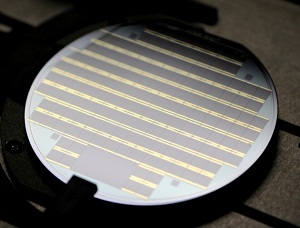Solar Junction breaks its own efficiency record with 44%
 Solar Junction’s latest record-breaking efficiency announcement is just another stepping stone one a road to even bigger achievements.
Solar Junction’s latest record-breaking efficiency announcement is just another stepping stone one a road to even bigger achievements.
That’s what Vijit Sabnis, vice president of technology and Solar Junction cofounder.
“We have a roadmap to take us to about 50 percent efficiency,” Sabnis said.
And it’s not hard to believe after the company announced a commercial-ready solar cell with 44 percent efficiency confirmed by the National Renewable Energy Laboratory in Golden, Colo.
That 44 percent breaks the previous world record of 43.5 percent for solar cell efficiency set by Solar Junction in April 2011.
“We broke our own record,” Sabnis said.
Solar Junction uses a different technology than standard solar cell producers. Rather than silicon, the northern California company uses A-SLAM materials, which concentrate sunlight on multi-junction cells.
“That platform allows us to get much higher efficiencies than our competition,” Sabnis said.
The highest efficiency silicon solar cells are still only achieving efficiencies in the 25 percent range, he said.
“And they can make incremental improvements on that,” Sabnis said.
But he said the technology is limited and it would be a challenge for researchers or manufacturers to realize any major efficiency gains with it.
Of course, the cost of the technologies still make silicon the first choice for terrestrial solar applications.
Solar Junction produces cells for the concentrating photovoltaic world and for space applications.
“There might be an opportunity to go more mainstream in the future,” Sabnis said. “The fundamentals will have to do with reducing cost.”
For now, the company is going to continue buildings its presence in the CPV and space markets, Sabnis said.
He said he expects the company to continue breaking efficiency records and perhaps at an even faster pace. The company has a roadmap to achieving 50 percent efficiency within five to seven years.
“I think it will be more along the five year timeline than seven,” Sabnis said. “I’d say 1 percent a year is realistic.”



